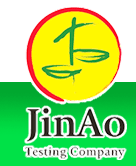CTEI Exclusive:
Domestic demands will serve the major factor stimulating development of the textile industry in 2010. Although the textile industry has seen a recovery, international trade environment does not clear up and risks still exist.
Domestic markets boom continues
In Oct., 2009, the IMF increased its 2010 forecast for China's GDP. In July it forecast China's economy would grow 8.5% next year. In the latest GDP forecast, China will grow 9% in 2010. The World Bank in Nov. also raised its forecasts for Chinese growth this year and projected a slightly faster pace of expansion in 2010. Gross domestic product would increase 8.4% this year and 8.7% in 2010 on the back of massive fiscal and monetary stimulus, the bank said. China's consumer confidence index (CCI) rose to 103.9 in the fourth quarter last year, up 3.1 percentage points from the previous quarter, said a report released on Jan. 26 by the China Economic Monitoring & Analysis Center under the National Bureau of Statistics.
Textile industry analysts generally agree that, 2010 growth rate of textile and garment industry in domestic market is likely to reach 20-25 percent compared with 2009.
Table 2.China 2010 Growth Forecast
|
Organization
|
Release Date
|
China Growth (%)
|
|
2009
|
2010
|
|
IMF
|
Jul.2009
|
7.5
|
8.5
|
|
IMF
|
Oct. 2009
|
8.5
|
9.0
|
|
World Bank
|
Jun.2009
|
7.2
|
7.7
|
|
World Bank
|
Nov.2009
|
8.4
|
8.7
|
Source: IMF, World Bank
China's economy shot back to nearly double-digit growth in 2009 after nearly standing still at the end of 2008. "In 2010, active fiscal policies will continue, and this means we cannot weaken the intensity of fiscal support for economic development, avoiding the losses to our achievements that would come from an excessively early exit." Chinese Finance Minister Xie Xuren made the comments at a policy-setting meeting in Jan. Xie said that efforts to expand domestic demand would include policies to raise incomes, especially for poorly paid workers and farmers; continued spending on public works, including schools and hospitals; and taxation changes.
Waiting for overseas market recovery
Table 3. 2010 Growth Forecast for the U.S., Eurozone, and Japan
|
Organization
|
U.S.
|
Eurozone
|
Japan
|
|
2009
|
2010
|
2009
|
2010
|
2009
|
2010
|
|
UN
|
-2.5
|
2.1
|
-4.1
|
0.4
|
-5.6
|
0.9
|
|
OECD
|
-2.5
|
2.5
|
-4.0
|
0.9
|
-5.3
|
1.8
|
|
IMF
|
-2.7
|
1.5
|
-4.2
|
0.3
|
-5.4
|
1.7
|
The Conference Board, a New York-based research group, said its Consumer Confidence Index rose to 52.9 in December, from an upwardly revised 50.6 in November. A more optimistic outlook for business and labor market conditions was the driving force behind the increase in the expectations index. Consumers' evaluation of the job market was mixed. The percentage of those claiming jobs are currently hard to get fell to 48.6% from 49.2%, but the number of consumers claiming that jobs are "plentiful" fell to a new low to 2.9% from 3.1%.
Chart 4. Consumer Confidence Indicator in the U.S.
Consumer Confidence Index
Source: China Economic Monitoring and Analysis Center (CEMAC)
The European Commission's closely watched consumer confidence indicator for the 27-member EU rose from minus 14.3 in December to minus 13.3 in Jan.2010. But while the data showed the mood among consumers in the broader EU improving this month, it remained almost unchanged in the 16-member eurozone.
Japan's consumer confidence index posted the second straight monthly drop, falling to 37.6 in December from 39.5 in November, when it showed its first drop in 11 months, as more people became concerned about their job security and incomes six months ahead, according to Cabinet Office.
Anyway, continuity in the demand for the Chinese textile covering in the U.S., Japan and EU markets is keeping the hopes of Chinese exporters alive that after the recession.
Moreover, a decade after it was first mooted, the world's largest free-trade area by population came broadly into effect on January 1st. The agreement between China and the ten-country Association of South-East Asian Nations (ASEAN) covers nearly 1.9 billion people. In terms of economic value, this is the third-largest regional agreement, after only the EU and NAFTA. Cooperation between China and ASEAN nations will offer further impetus to China textile export.
Vulnerabilities and risk
It is not contradictory for China to amass a larger share of wealth and power while still suffering from domestic vulnerabilities. In 2010, China textile industry needs to remain vigilant about international pressure for renminbi revaluation. Few questions loom larger with currency strategists this year than whether. China is under growing pressure from its international trading partners, led by the US, Europe and Japan, to let the renminbi rise.
Meanwhile, trade barriers and material price rising (e.g. raw materials prices) will affect the export of China��s textile industry and further exacerbate competition on textile market.
Chart 5. China Cotton Index for 328-Grade Cotton vs. Cotlook A Index in 2009 |


















